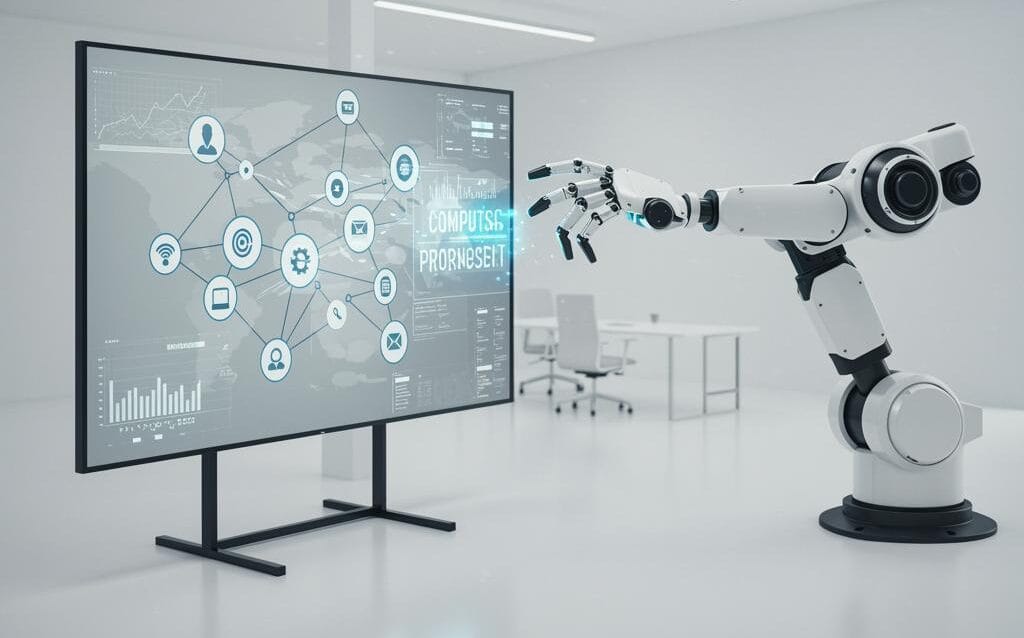Computer Vision: Automate Business Processes & Boost Efficiency
Computer Vision Applications for Business Process Automation
In today’s rapidly evolving business landscape, automation is no longer a luxury but a necessity. Computer vision, a field of artificial intelligence that enables computers to “see” and interpret images, is revolutionizing how businesses streamline operations and improve efficiency. This blog post explores the diverse applications of computer vision in business process automation (BPA), offering practical insights and examples.
Quality Control and Inspection
One of the most impactful applications of computer vision lies in quality control and inspection. Manual inspection is often slow, inconsistent, and prone to human error. Computer vision systems offer a far more reliable and efficient alternative.
Automated Defect Detection
Computer vision can be trained to identify defects in products with high accuracy. This includes:
- Surface imperfections: Scratches, dents, and blemishes on manufactured goods.
- Missing components: Ensuring all parts are present and correctly assembled.
- Dimensional accuracy: Verifying that products meet specified size and shape requirements.
By automating defect detection, businesses can reduce waste, improve product quality, and minimize customer complaints.
Real-time Monitoring and Alerts
Computer vision systems can continuously monitor production lines and trigger alerts when anomalies are detected. This allows for immediate corrective action, preventing further production of defective items.
Inventory Management and Logistics
Efficient inventory management is crucial for optimizing costs and ensuring timely order fulfillment. Computer vision streamlines various aspects of inventory management and logistics.
Automated Inventory Tracking
Traditional inventory tracking methods, such as manual counting and barcode scanning, are time-consuming and error-prone. Computer vision offers a more automated and accurate solution:
- Object recognition: Identifying and counting items based on visual characteristics.
- Real-time inventory updates: Providing up-to-the-minute information on stock levels.
- Reduced manual effort: Minimizing the need for manual inventory checks.
Warehouse Automation
Computer vision plays a vital role in automating warehouse operations, including:
- Autonomous forklifts: Guiding forklifts to navigate warehouses and transport goods.
- Automated sorting and packaging: Sorting and packaging items based on visual identification.
- Optimized storage: Determining the most efficient storage locations for different items.
These applications lead to faster order fulfillment, reduced labor costs, and improved warehouse efficiency.
Customer Service and Retail
Computer vision is transforming the customer service and retail industries, enhancing customer experiences and optimizing operations.
Self-Checkout Systems
Computer vision-powered self-checkout systems enable customers to quickly and easily scan and pay for their purchases. These systems can:
- Identify products: Recognize items placed on the checkout counter.
- Prevent theft: Detect attempts to bypass the scanning process.
- Reduce checkout lines: Providing a faster and more convenient checkout experience.
Customer Behavior Analysis
Computer vision can analyze customer behavior in retail stores to gain valuable insights into shopping patterns. This includes:
- Traffic flow analysis: Tracking customer movement to identify popular areas.
- Product interaction analysis: Monitoring customer engagement with different products.
- Optimized store layout: Using data to improve store layout and product placement.
Document Processing and Data Extraction
Many businesses still rely on manual document processing, which is a time-consuming and error-prone task. Computer vision automates document processing and data extraction.
Optical Character Recognition (OCR)
OCR technology allows computers to “read” text from images and convert it into machine-readable format. Computer vision enhances OCR capabilities by:
- Improving accuracy: Handling variations in font, size, and image quality.
- Extracting structured data: Identifying and extracting specific data fields from documents.
- Automating data entry: Eliminating the need for manual data entry.
Automated Invoice Processing
Computer vision can automate the processing of invoices by:
- Extracting key information: Identifying and extracting invoice number, date, amount, and vendor information.
- Validating data: Verifying data against existing records.
- Routing invoices: Automatically routing invoices to the appropriate personnel for approval.
Conclusion
Computer vision is a powerful tool for automating a wide range of business processes. By leveraging computer vision, businesses can improve efficiency, reduce costs, enhance customer experiences, and gain a competitive advantage. As computer vision technology continues to advance, its applications in BPA will only become more widespread and impactful. Investing in computer vision solutions is an investment in the future of your business.

